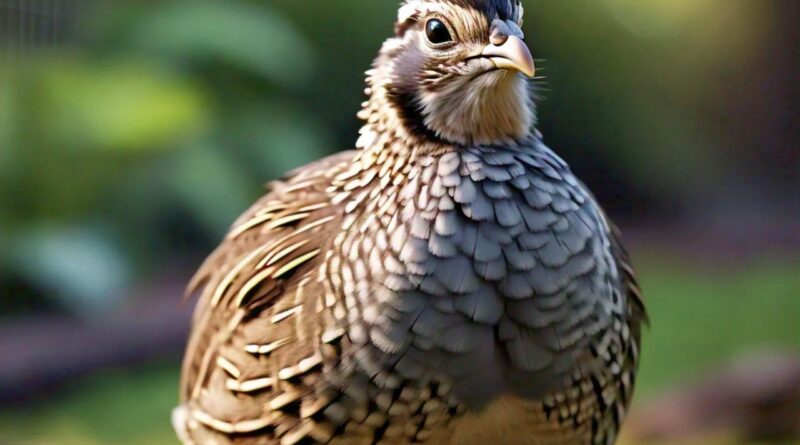How Long Do Quail Eggs Take to Hatch?
How Long Do Quail Eggs Take to Hatch?
1. Introduction
Raising quail is becoming increasingly popular due to their small size, quick maturation, and prolific egg-laying abilities. One of the most common questions for new quail breeders is, “How long do quail eggs take to hatch?” Understanding the incubation process is essential for anyone interested in breeding these fascinating birds.
2. The Quail Egg Incubation Period
Quail eggs typically take around 17 to 18 days to hatch. However, this period can vary slightly depending on the species of quail and the conditions in which the eggs are incubated. It’s crucial to maintain a consistent environment throughout the incubation period to ensure successful hatching.
3. Factors Influencing Hatching Time
Several factors can influence how long quail eggs take to hatch, including temperature, humidity, and the quality of the eggs. Even minor fluctuations in these conditions can affect the incubation process. For instance, lower temperatures may delay hatching, while higher temperatures could cause eggs to hatch prematurely.
4. Preparing for Incubation
Before you begin incubating quail eggs, it’s important to prepare both the eggs and the incubator. This includes selecting fertile eggs, cleaning the incubator, and setting the correct temperature and humidity levels. Proper preparation can significantly impact the success rate of hatching.
5. The Role of Temperature in Incubation
Maintaining the correct temperature is crucial for successful quail egg incubation. The ideal temperature for quail eggs is around 99.5°F (37.5°C). Even slight deviations can result in failed hatches, so it’s important to monitor the incubator regularly to ensure consistency.
6. The Importance of Humidity
Humidity levels are just as important as temperature in the incubation process. Quail eggs require a humidity level of around 45-50% during the first 14 days of incubation. This should be increased to 65-70% during the final days before hatching to prevent the chicks from sticking to the shell.
7. Turning the Eggs
Turning the eggs regularly is another critical aspect of the incubation process. Eggs should be turned at least three times a day to prevent the embryo from sticking to the shell. Automated incubators often have a turning mechanism, but if you’re doing it manually, be gentle to avoid damaging the eggs.
8. Signs of Hatching
As the incubation period nears its end, you may notice signs that the eggs are about to hatch. These include slight movements within the egg and faint peeping sounds. It’s important not to interfere during this stage, as the chicks need time to break through the shell on their own.
9. The Hatching Process
Hatching typically begins with the chick using its egg tooth to break through the shell, a process known as “pipping.” Once pipping starts, it can take several hours for the chick to fully emerge. This is a delicate process, and it’s best to let nature take its course without intervening.
10. Aftercare for Newly Hatched Quail
After hatching, the chicks will need to be moved to a brooder, where they can be kept warm and safe. The brooder should be pre-warmed to around 95°F (35°C) and should have a clean, non-slip surface. Chicks should be left to dry and rest before being introduced to food and water.
11. Common Challenges During Incubation
Even with careful preparation, challenges can arise during the incubation process. These can include temperature fluctuations, incorrect humidity levels, and issues with egg quality. Understanding these challenges and how to address them can improve your chances of a successful hatch.
12. How Often Do Quail Lay Eggs?
Understanding the egg-laying habits of quail can provide insights into the incubation process. Quail are prolific layers, often producing an egg nearly every day. If you’re interested in learning more about their egg-laying frequency, you can find detailed information here.
13. Do Quail Sit on Their Eggs?
While some birds are known for diligently sitting on their eggs to keep them warm, quail often rely on artificial incubation, especially in a domestic setting. If you’re curious about whether quail exhibit brooding behavior, you might find this article on quail sitting on their eggs informative.
14. When to Seek Help
If you encounter significant issues during the incubation process, such as eggs failing to hatch after the expected time, it may be necessary to seek expert advice. There are many resources and communities dedicated to quail breeding that can offer support and guidance. For more post visit here
15. Conclusion
The incubation process for quail eggs is relatively straightforward but requires careful attention to detail. By maintaining the right conditions and monitoring the progress closely, you can expect to see your quail chicks emerge in about 17 to 18 days. For a more in-depth guide on the incubation process, be sure to check out this comprehensive resource here.

